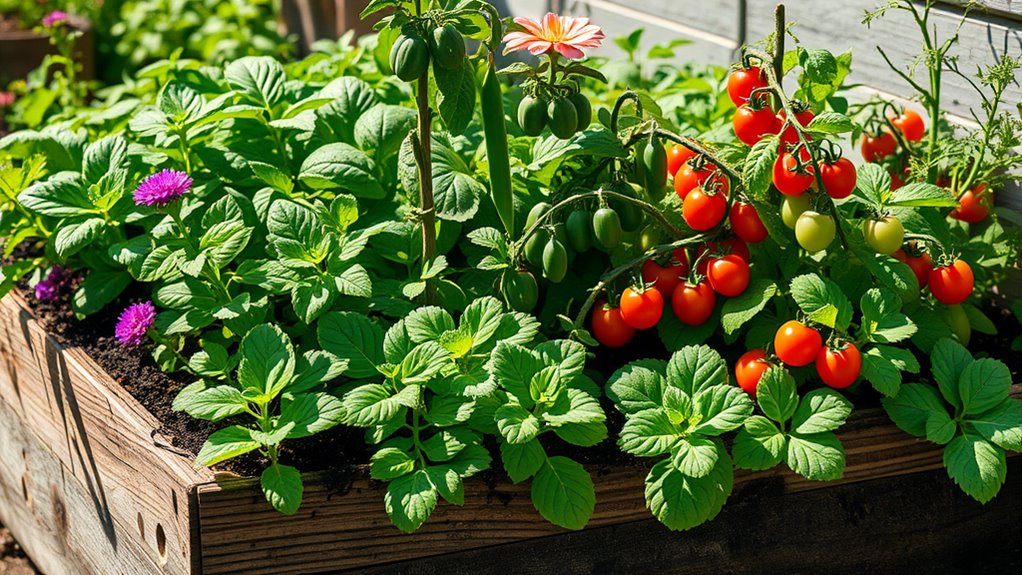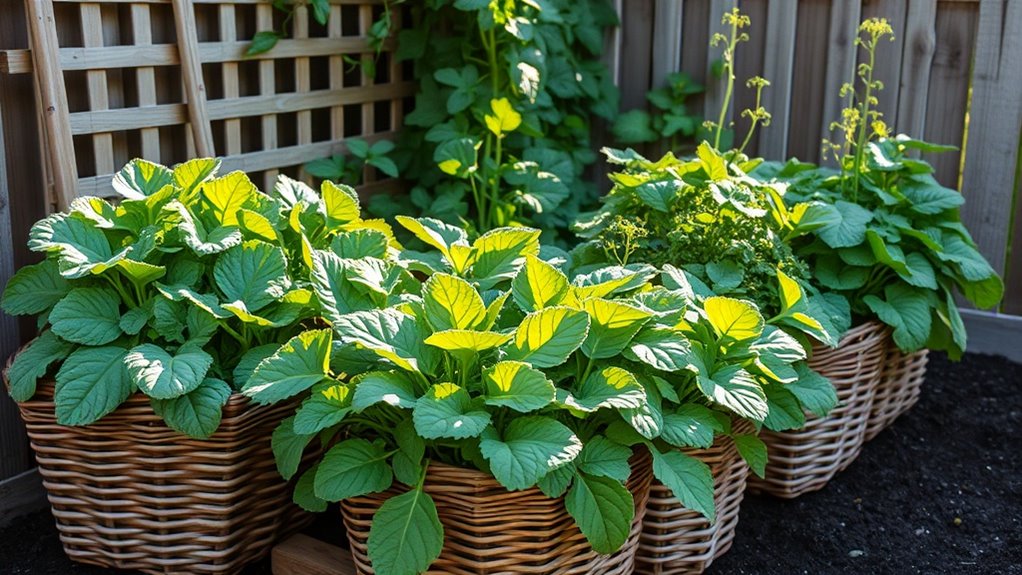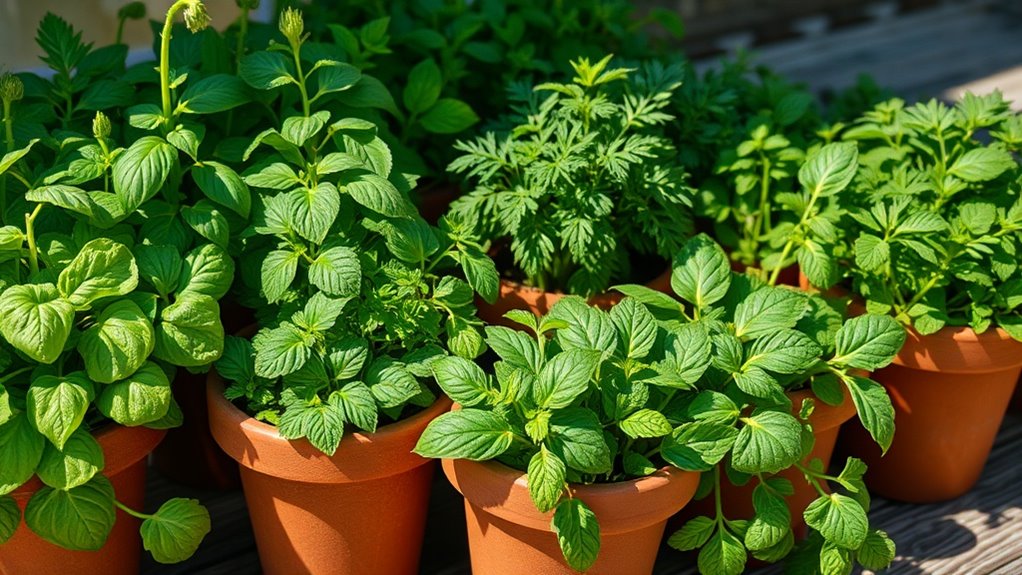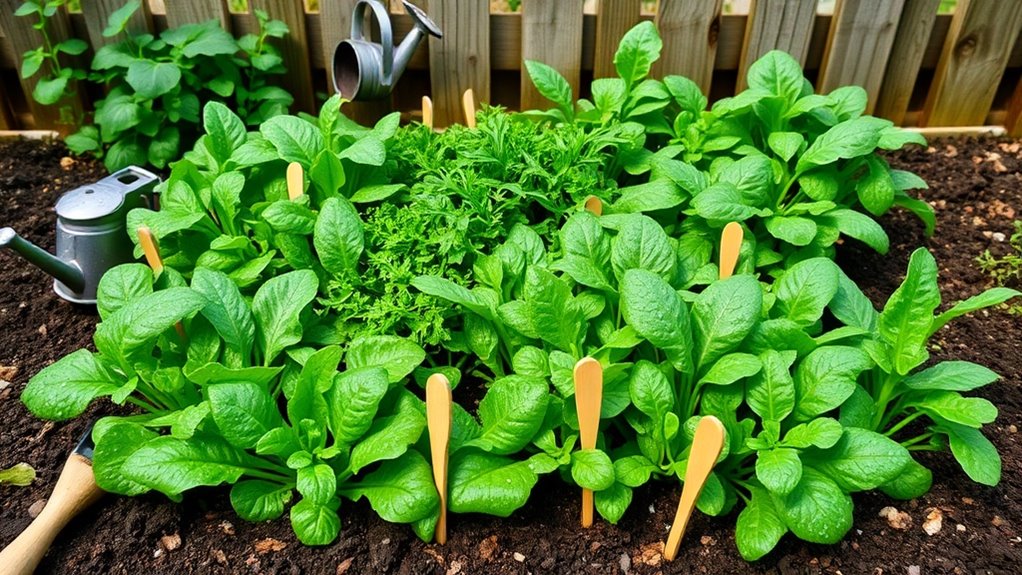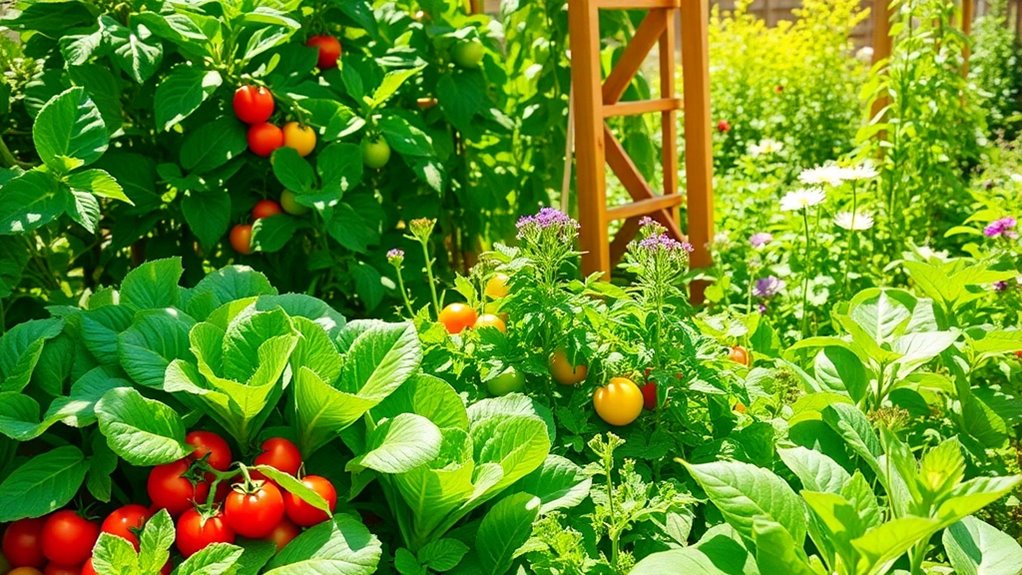Create a Micro-Garden That Produces Year-Round
Have you ever wondered how a small space can yield fresh produce all year? Creating a micro-garden is a practical solution to enjoy homegrown vegetables, herbs, and greens regardless of the season. By strategically selecting your location and plants, you can set the stage for continuous harvests. Consider how to optimize your space and care techniques to ensure success. The first steps are crucial, and you’ll want to know what they are.
Key Takeaways
- Select a sunny, sheltered spot with good drainage and easy access to water for your micro-garden.
- Grow fast-maturing plants like lettuce and radishes alongside hardy crops like kale for year-round yields.
- Employ companion planting techniques to enhance growth, deter pests, and optimize space in your micro-garden.
- Maintain soil health by regularly adding compost, testing pH, and applying balanced fertilizers throughout the seasons.
- Utilize protective measures like row covers in winter and install drip irrigation for consistent moisture management year-round.
Choosing the Right Location for Your Micro-Garden
When deciding where to set up your micro-garden, what factors should you consider?
First, look for a spot with ample sunlight—at least six hours daily is ideal.
Next, ensure easy access to water; this’ll help you maintain consistent moisture.
Consider wind exposure, too; a sheltered area protects delicate plants.
Drainage is crucial, so avoid low-lying spots that collect water.
If you’re using containers, check weight and mobility to move them as needed.
Lastly, think about proximity to your kitchen for convenient harvesting.
Additionally, understanding optimal planting techniques can significantly enhance your garden’s productivity.
Keep these micro-garden tips in mind, and you’ll create a thriving garden that flourishes year-round!
Selecting Suitable Plants for Year-Round Harvest
Selecting the right varieties can make all the difference.
Here’s a list of suitable options that thrive in micro-gardens:
- Lettuce: Fast-growing and perfect for various climates.
- Spinach: Nutrient-rich and tolerates cooler temperatures.
- Radishes: Quick to mature, providing early yields.
- Herbs (like basil and parsley): Versatile and great for flavoring dishes.
- Kale: Hardy and can withstand frost, allowing for late-season harvests.
To optimize your space, consider incorporating vertical gardening techniques to maximize sunlight exposure and yield.
Optimal Planting Techniques for Maximum Yield
To achieve maximum yield in your micro-garden, you’ll want to focus on key planting techniques.
Start by ensuring your soil is well-prepared, use companion planting to enhance growth, and implement seasonal crop rotation to keep nutrients balanced. Incorporating companion planting can also help deter pests that threaten your tomato and pepper crops.
Soil Preparation Essentials
Soil is the lifeblood of your micro-garden, and preparing it properly can significantly enhance your plants’ growth and yield.
Here are some essentials to get you started:
- Test pH: Ensure the soil pH is between 6.0 and 7.0 for optimal nutrient absorption.
- Add Organic Matter: Incorporate compost or well-rotted manure to enrich the soil.
- Aerate: Loosen compacted soil to improve drainage and root penetration.
- Mulch: Use organic mulch to retain moisture and suppress weeds.
- Fertilize: Apply balanced fertilizers to give your plants the nutrients they need for robust growth.
With these steps, your micro-garden will thrive!
Companion Planting Strategies
After ensuring your soil is well-prepared, maximizing your micro-garden’s potential can also be achieved through strategic companion planting. These pairings support growth, deter pests, and enhance flavor. Consider these effective combinations:
| Plant 1 | Plant 2 | Benefits |
|---|---|---|
| Tomatoes | Basil | Improves flavor and growth |
| Carrots | Onions | Repels pests |
| Lettuce | Radishes | Fast-growing space fillers |
| Cucumbers | Nasturtiums | Attracts pollinators |
Seasonal Crop Rotation
Maximizing your micro-garden’s yield relies heavily on effective seasonal crop rotation.
This practice not only enhances soil health but also prevents pests and diseases.
Here are some optimal techniques to consider:
- Plan your crops: Rotate different families each season to maintain nutrient balance.
- Consider growth cycles: Pair fast-growing crops with slower ones for efficient space use.
- Mind the seasons: Use cool-season crops in spring and fall, and warm-season ones in summer.
- Use cover crops: Introduce legumes to fix nitrogen in the soil.
- Observe and adjust: Monitor performance and adapt your plan as needed for the best results.
Seasonal Care Strategies for Sustainable Growth
As you cultivate your micro-garden throughout the year, understanding seasonal care strategies is essential for promoting sustainable growth.
In spring, focus on soil enrichment with compost and choose fast-growing crops.
In summer, ensure adequate shading and pest control.
During fall, harvest promptly and prepare your soil for winter by planting cover crops.
In winter, protect your plants with cloches or row covers to maintain warmth.
Regularly monitor plant health, adjusting care based on seasonal changes. Additionally, implementing crop rotation techniques can enhance soil fertility and reduce pest issues over time.
Implementing Efficient Watering and Drainage Systems
Effective watering and drainage systems play a vital role in the success of your micro-garden.
To ensure your plants thrive, consider these practical tips:
- Drip irrigation: Install a drip system for efficient, targeted watering.
- Soil moisture sensors: Use sensors to monitor hydration levels.
- Raised beds: Elevate your garden beds to enhance drainage.
- Mulching: Apply organic mulch to retain moisture and suppress weeds.
- Rainwater collection: Set up barrels to capture and utilize natural rainwater, as rainwater gardens can significantly improve water efficiency and sustainability in your gardening efforts.
Utilizing Vertical Space for Enhanced Production
Transform your micro-garden by utilizing vertical space, which can significantly boost your plant production without requiring additional ground area.
Consider using wall planters, hanging baskets, or tiered shelves to create layers of growth. Choose lightweight, durable materials for easy installation and maintenance.
Herbs, strawberries, and leafy greens thrive in vertical setups, maximizing sunlight exposure and air circulation. Additionally, implementing innovative methods can further optimize your growing techniques and increase overall yield.
Make sure to space plants adequately to prevent overcrowding and ensure proper access to water and nutrients.
With vertical gardening, you’ll not only enhance your yield but also create an eye-catching focal point that brings beauty and functionality to your space.

